With almost 10,000 different species of birds soaring across our planet, the question of which reigns supreme in size is a fascinating one. Defining “largest” isn’t straightforward – do we measure by length, weight, or perhaps, for creatures of the air, by the sheer span of their wings as they glide overhead?
When considering birds that master flight, focusing on wingspan seems most pertinent. It’s about the grandeur, the shadow cast as they circle above, rather than simply mass.
This article will delve into the largest flying birds by wingspan, while also acknowledging some of the heavyweight contenders. We’ve curated a list that balances wingspan and weight, and ensures diversity, avoiding a repetitive parade of similar species.
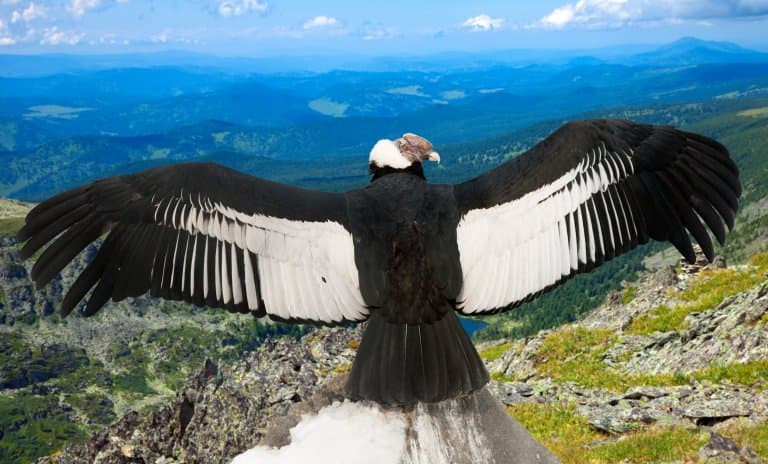 Andean Condor in flight with a vast wingspan
Andean Condor in flight with a vast wingspan
Here are the top ten largest flying birds in the world, ranked by wingspan, while also considering weight and diversity to present a truly captivating list.
10. Blakiston’s Fish Owl
Weight: 10 lbs (4.6 kg)
The Blakiston’s Fish Owl, a rare and magnificent eagle owl hailing from East Asia and Russia, initiates our list. It stands toe-to-toe with its Eurasian Eagle Owl cousin in the contest for the largest wingspan among owls, with both reaching lengths of around 6 feet (1.8 meters) and beyond.
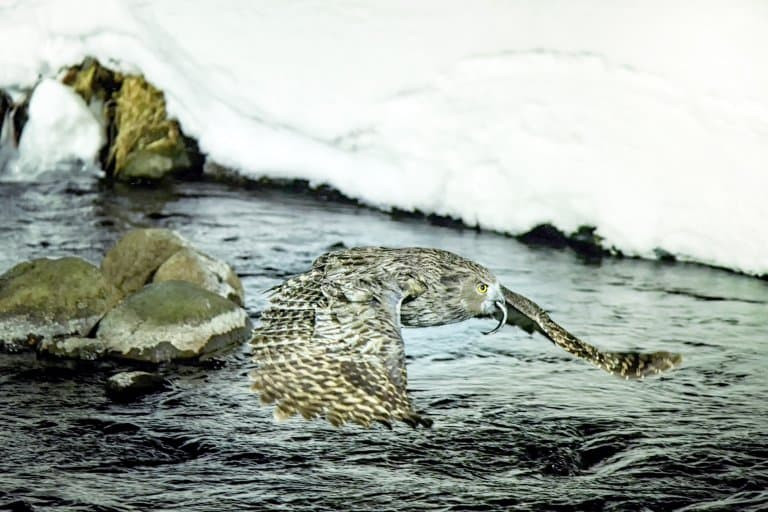 A Blakiston's Fish Owl perched on a branch, displaying its large size
A Blakiston's Fish Owl perched on a branch, displaying its large size
While the Eurasian Eagle Owl might claim the absolute record wingspan, the Blakiston’s Fish Owl edges it out on average. Given its significantly smaller population, this remarkable owl rightfully earns its place among the giants.
9. Dalmatian Pelican
Weight: 33 lbs (15 kg)
The Dalmatian Pelican, the largest of its kind, also ranks among the largest birds overall. This pelican boasts an enormous pouch and a wingspan nearing 6.2 feet (1.9 meters), significantly larger than its canine namesake.
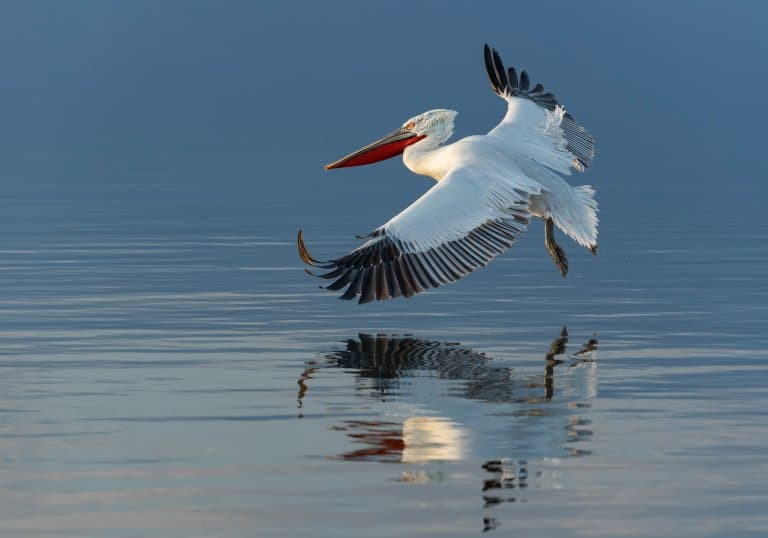 A Dalmatian Pelican in flight, showing its substantial wingspan and pouch
A Dalmatian Pelican in flight, showing its substantial wingspan and pouch
Far from being graceful in appearance, these birds can weigh up to 33 lbs (15 kg), making them one of the heftiest flying birds. While some unsubstantiated claims suggest their wingspan rivals birds at the very top of this list, verified measurements place them firmly in the top ten. Average wingspans reach up to 6.2 feet (1.9 m), with some anecdotal reports of up to 9 feet (2.8 m), solidifying its status as a truly large avian creature. The Great White Pelican is a close contender, but the Dalmatian Pelican generally takes the crown for size.
8. Secretarybird
Weight: 9.4 lbs (4.27 kg)
The Secretarybird, with its striking appearance, seems like it belongs in a prehistoric era. It’s arguably the closest living bird to a dinosaur in terms of looks.
 A Secretarybird in flight, showcasing its unique profile and considerable wingspan
A Secretarybird in flight, showcasing its unique profile and considerable wingspan
Not only is it a heavy bird, but it also stands tall, reaching up to 4.3 feet (1.3 meters). This combination of size, weight, and a body structure not ideally suited for flight means it largely relies on wind currents for lift. Flapping is infrequent and short-lived; the Secretarybird spends most of its time on the ground, hunting prey in grasslands with its powerful legs.
7. Steller’s Sea Eagle
Weight: 22 lbs (10 kg)
As we enter the realm of eagles, conflicting reports abound. Eagles hold a special place in human admiration, historically used as symbols of power by numerous nations.
 A majestic Steller's Sea Eagle perched, highlighting its powerful build
A majestic Steller's Sea Eagle perched, highlighting its powerful build
The allure of eagles fuels the desire to identify the largest, resulting in a competitive landscape. Contenders include the Steller’s Sea Eagle (Russia), the Harpy Eagle (Central and South America), the Philippine Eagle, and the Bald and Golden Eagles (North America). Each is claimed to have wingspans exceeding 7.9 feet (2.4 meters), claims that are often difficult to verify definitively. We’ve recognized the Steller’s Sea Eagle due to its generally accepted status as the heaviest eagle in the world, granting it extra consideration.
6. Trumpeter Swan
Weight: 33 lbs (15 kg)
Now we encounter the heavyweights. The Trumpeter Swan, the largest waterfowl, outweighs many birds on this list.
 Trumpeter Swan in flight over water, displaying its impressive size
Trumpeter Swan in flight over water, displaying its impressive size
Widespread in North America, they are larger and more vocal than their European swan relatives. Despite past hunting pressures for their meat and feathers, some European populations have survived. Their sheer size offers protection from most predators, except humans, allowing them to live relatively undisturbed. Young swans grow rapidly on a diet rich in protein-rich insects, while adults primarily eat vegetation, contributing to lifespans exceeding 30 years.
5. Kori Bustard
Weight: 39 lbs (18 kg)
The Kori Bustard is a truly massive bird. It’s not only arguably the heaviest flying animal but also earns its place due to its substantial wingspan.
The Kori Bustard, possibly the heaviest flying bird, is a ground-dwelling giant with flight capabilities.
Similar to the Secretarybird, it is capable of flight but prefers terrestrial life, foraging for food and even engaging in confrontations with Secretarybirds. While some reports suggest weights reaching 44 lbs (20 kg), 39 lbs (18 kg) is a more reliably documented figure. Standing over 3.2 feet (one meter) tall, its weight is a formidable defense against competitors.
4. Marabou Stork
Weight: 20 lbs (9 kg)
The Marabou Stork, nearly as tall as the Secretarybird but a more proficient flier, is a scavenging giant of East Africa. These birds are often found around trash heaps, casting imposing shadows as they approach.
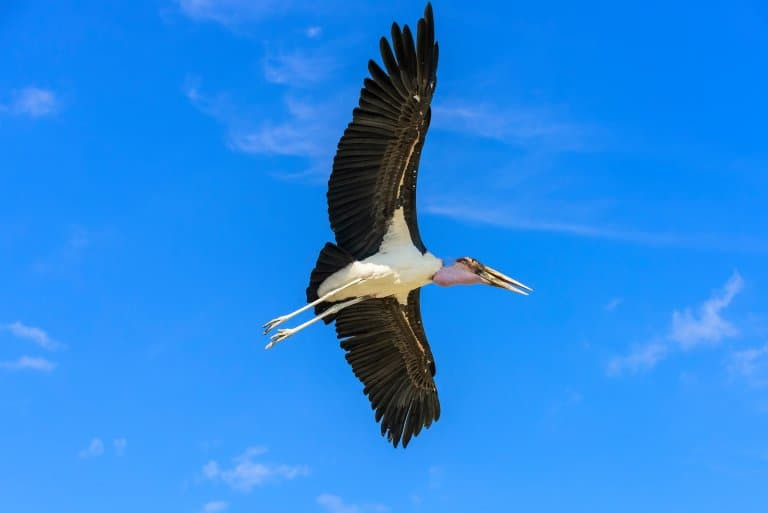 Marabou Stork with its wings spread, highlighting its considerable wingspan
Marabou Stork with its wings spread, highlighting its considerable wingspan
Claims exist of Marabou Storks reaching wingspans exceeding 9.8 feet (3 meters), potentially rivaling the Andean Condor, but reliable evidence is still lacking. Nevertheless, it’s undeniably one of the largest flying birds. Despite lacking the aesthetic appeal of the condor, with its bald head and peculiar neck appendage, it possesses a unique, albeit “ugly-cute,” charm. Reaching heights of 3.9 feet (1.2 meters) and wingspans of 9.5 feet (2.9 meters), the Marabou Stork is a truly massive avian species.
3. Andean Condor
Weight: 35 lbs (16 kg)
The Andean Condor’s average weight and wingspan surpass almost every other flying bird, making it arguably the largest flying creature overall, on average.
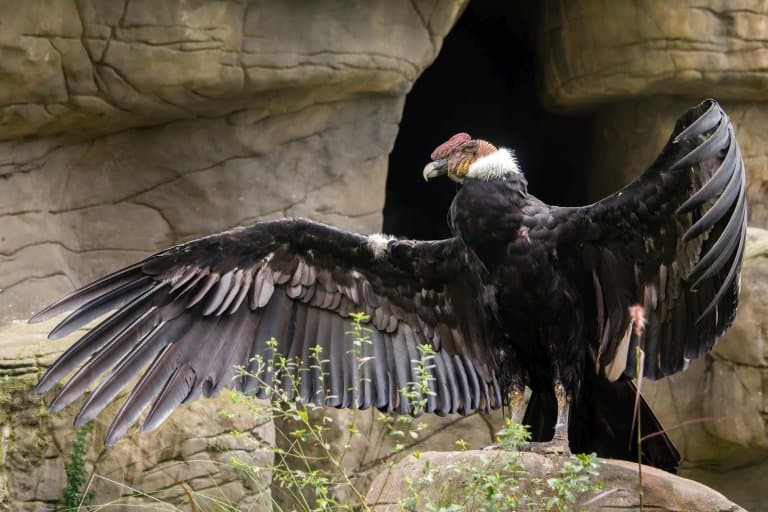 Andean Condor soaring high in the mountains, emphasizing its wingspan
Andean Condor soaring high in the mountains, emphasizing its wingspan
While male Kori Bustards can sometimes outweigh them, and exceptional individuals of the following species can exceed their wingspan, the Andean Condor consistently holds the title of largest flying bird based on average measurements. Their immense wing area allows them to stay aloft for hours, gliding effortlessly without flapping, conserving energy vital for a bird of this size. The Andean Condor is the largest flying bird in the Western Hemisphere and globally, when considering both weight and wingspan in combination.
2. Cinereous Vulture
Weight: 28.6 lbs (13 kg)
The Cinereous Vulture, another formidable raptor, faces stiff competition. With the Himalayan Vulture boasting similar wingspans, determining the definitive second-largest is challenging. However, the Cinereous Vulture, also known as the Black Vulture, arguably sounds more imposing, and its heavier weight provides a distinguishing factor.
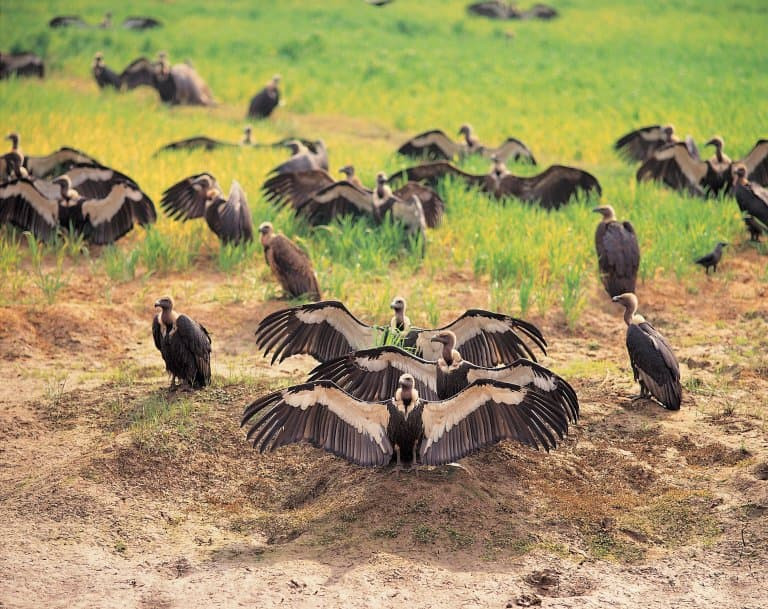 Cinereous Vultures perched on rocks, showcasing their size and dark plumage
Cinereous Vultures perched on rocks, showcasing their size and dark plumage
The Cinereous Vulture is the largest Old World vulture and a member of the bird of prey family. Its range extends from Spain across Europe, the Middle East, and Asia. These vultures are long-lived, with some individuals reaching nearly 40 years. Though facing poisoning and local extinctions in parts of Western Europe, reintroduction programs have shown promise. Primarily scavengers, they are sometimes accused by farmers of preying on young livestock, a testament to their size and power.
1. Wandering Albatross
Weight: 26.4 lbs (12 kg)
The Wandering Albatross stands as the undisputed champion of wingspan on this list, facing minimal competition. While other albatross species come close, the Wandering Albatross wingspan is reliably measured at 10.5 feet (3.2 meters) and has credible reports reaching up to 11.5 feet (3.5 meters).
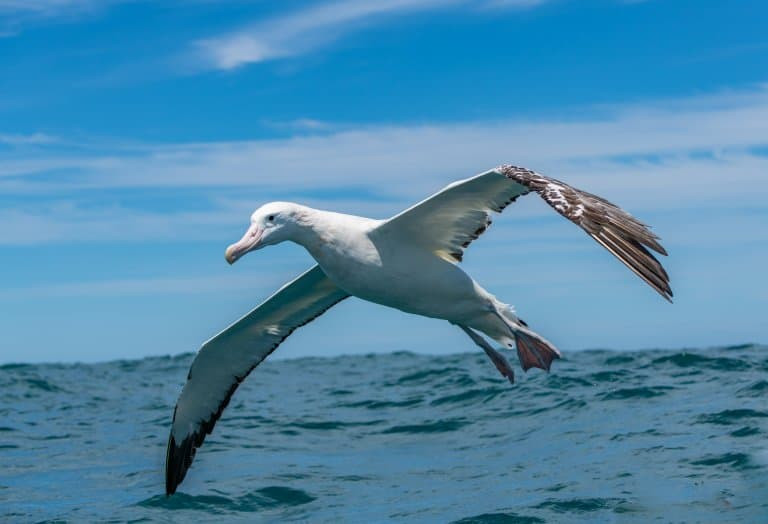 Wandering Albatross in flight over the ocean, highlighting its enormous wingspan
Wandering Albatross in flight over the ocean, highlighting its enormous wingspan
The Guinness Book of World Records recognizes a Wandering Albatross with a wingspan of 11 feet 11 inches (3.63 meters), caught in 1965 in the Tasman Sea, as the largest wingspan ever recorded for a living bird species, although verification remains challenging. These are incredible long-distance travelers, capable of covering over 75,000 miles (120,000 km) in a single year and 560 miles (900 km) or more in a day. Their exceptional wings, the longest of any living bird, facilitate this, allowing them to spend almost their entire lives airborne, only landing to feed and breed.
Final Thoughts
This concludes our exploration of the largest flying birds in the world by wingspan that grace our skies today.
But does size truly matter?
For some, bird size is merely a matter of bragging rights. However, for researchers, it’s a significant, measurable metric with implications for species conservation and understanding their ecological roles. Size measurements can reveal insights into an animal’s physical, physiological, and ecological characteristics, including sex, dietary needs, energy requirements, and nutrient cycling within ecosystems.
In most bird species, males are larger than females. Intriguingly, in some families, such as birds of prey, raptors, eagles, and shorebirds, this trend reverses. The reasons behind this remain a fascinating area of ongoing scientific inquiry.
This list specifically focused on flying birds, excluding flightless giants like the ostrich or southern cassowary. Flightless bird species represent only a small fraction of all bird species (around 1%), typically possessing smaller wings but denser bones and significantly heavier bodies. Indeed, the top 10 largest birds in the world by weight are all flightless, as the constraints of flight no longer limit body size, allowing them to evolve to even greater dimensions.
